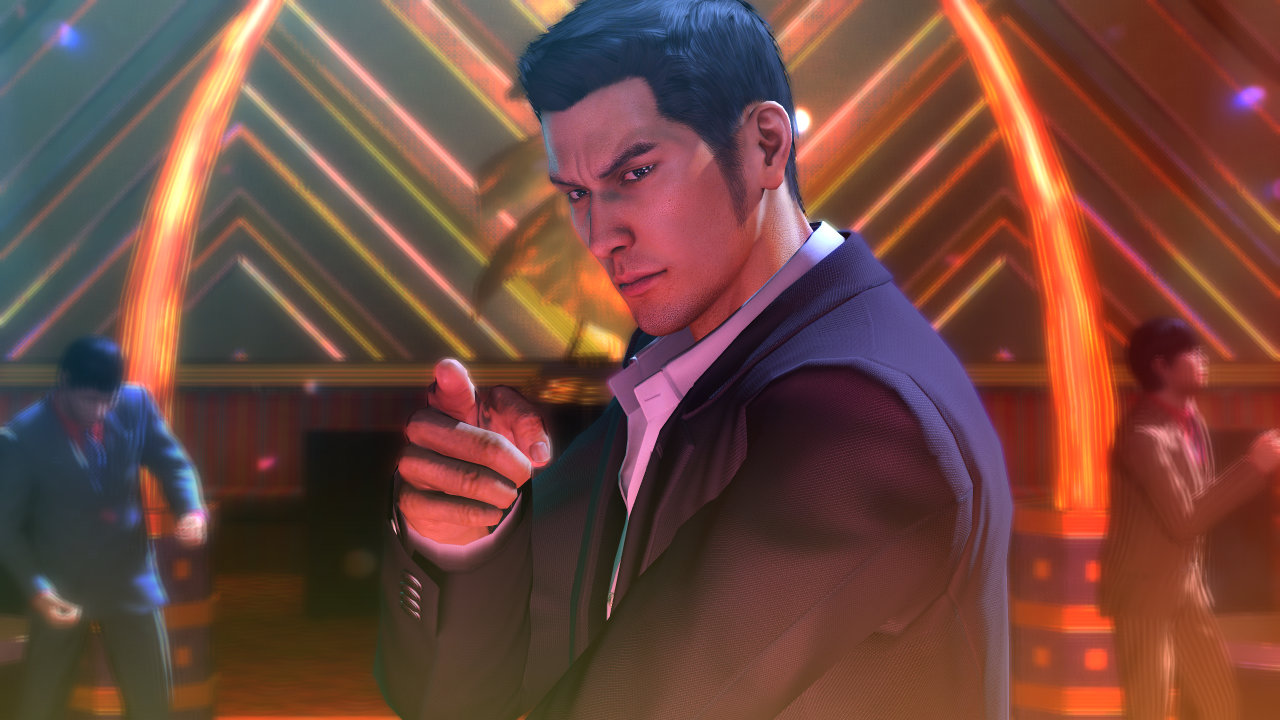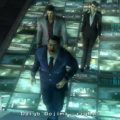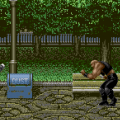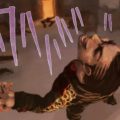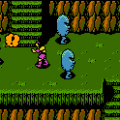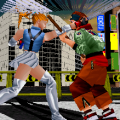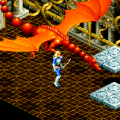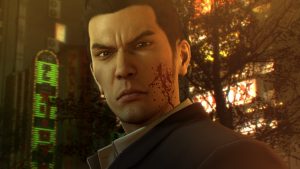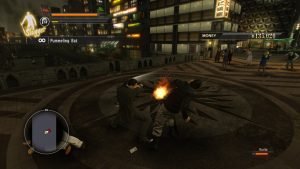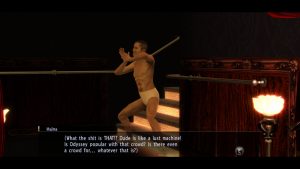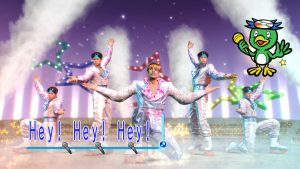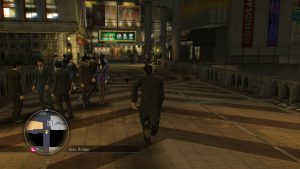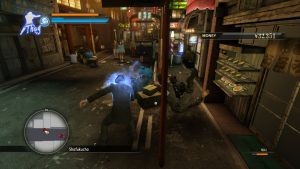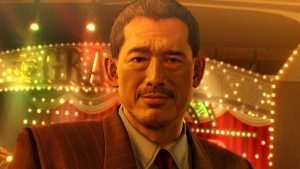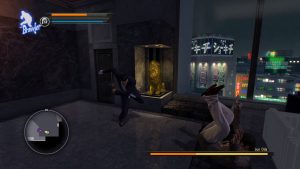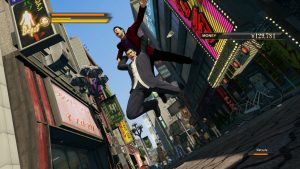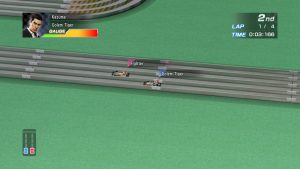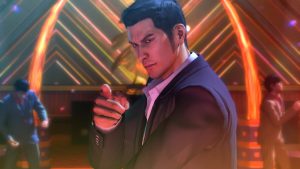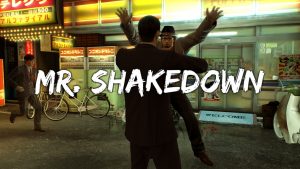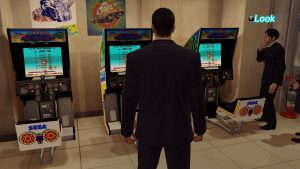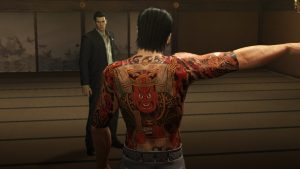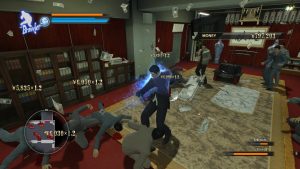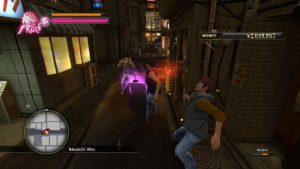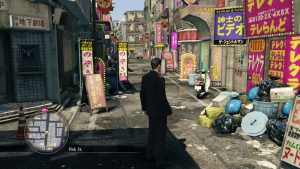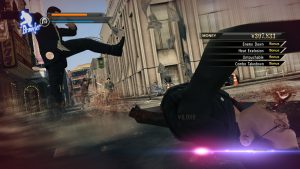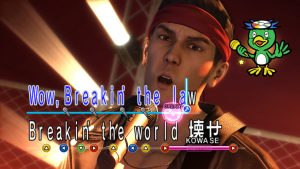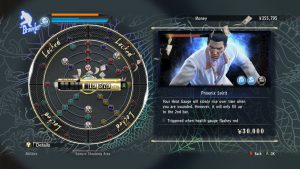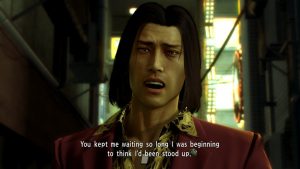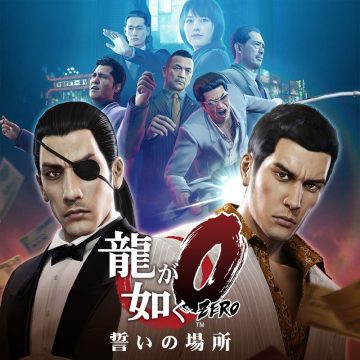
This is it. This is the big one. This game right here is where Like A Dragon became a household name. It almost didn’t happen. If not for fans coming out to beg Sony for Yakuza 5‘s western release, Sega would have never bothered with a 2017 release of this 10th anniversary project, and that would have been it. The failure of Dead Souls would have buried the western reach of the franchise. But they kept at it, got some Atlus localizers to punch up the localization, gave a PC port a shot to see if that would do anything, and boy. Did it ever.
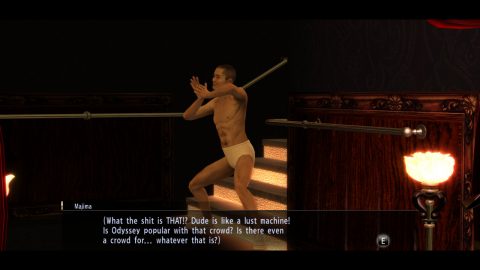
If you were online in the right circles at the time, you probably remember the sea of screencaps and gifs of Majima comically stabbing a guy set right next to Kiryu naming a chicken Nugget and then hiring him as a manager at his real estate company. By far the most ridiculous Like A Dragon game at the time, Yakuza 0‘s mixture of some of the most violent drama and some of the most absurd and camp substories, alongside its prequel status, made it a perfect entry for people to actually start with, with a lot to attract them. While the Kiwami remakes were already done or in the works, it wouldn’t be surprising to find out the PS3 era remasters might have had something to do with Sega realizing that oh, there was now an audience here, and it was hungry. Those remasters, Judgment, and the arrival of Ichiban Kasuga pretty much cemented RGG as a force to be reckoned with.
Yakuza 0 is also one of the best games in the series, and a very large number of fans swear to it as the best overall. It is a testament to everything the developers learned through the entire seventh console generation, with one of the tightest scripts and one of the most satisfying gameplay loops. It isn’t without issues, but it has some of the highest highs of them all.
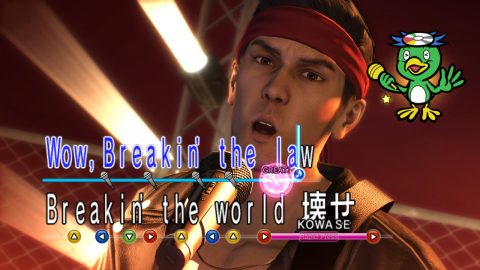
The premise is that the game is set at the tail end of 1988, during the huge real estate bubble Japan had found itself in. The country was absurdly wealthy at the time, in a way that wouldn’t last and lead to a recession they’re still working their way out of. Kiryu and Majima find themselves in the middle of this, having to find their place in the yakuza during an event where said yakuza were fighting over the rights to an empty lot – a lot in the area of what would eventually become the Millennium Tower in the rest of the series.
Kiryu, a new member of the Dojima family, ends up right in the middle as a shakedown he did earlier ends up complicated by the man he beat up being found dead in the very alley he left him in, and causing chaos with the land rights. Dojima’s three other lieutenants are clearly planning something while Kazama is in prison, and Kiryu ends up leaving the family to do his own investigation. Kazama foresaw this, however, and gave him an ally in the form of Tachibana Real Estate, who have their own reasons for opposing the Dojima family.
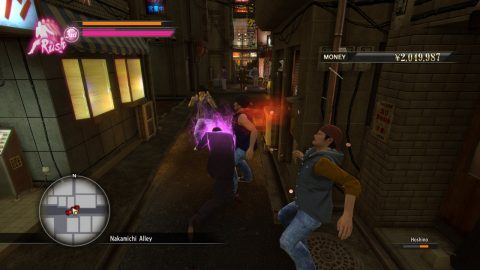
Majima, on the other hand, is now the manager of the Grand in Sotenbori, forced to work himself back into the Shimano family for going against the plans in place for the 1985 massacre explored in Yakuza 4. He gets a shortcut in assassinating a local goon, only to discover he was mislead, and his actual target is a blind girl who’s just as confused (and much more horrified) at this turn of events as he is. Unable to harm this innocent girl named Makoto Makimura, Majima tries to find a way to get them both out of this mess alive.
Yakuza 0 is brilliant, a perfect mixture of theme, drama, and energy, exploding from plot point to plot point, and boiling the tension where necessary. Every antagonist is memorable, and not just ones that get boss fights. The Dojima lieutenants are all some of the most memorable characters in the franchise, Daisaku Kuze standing out as a bruiser of a man who’s first introduced as just another schemer, only to become Kiryu’s rival through sheer determination and spite, having to be fought five times through the game and each brawl being a highlight. Majima also gets some great baddies, Tsukasa Sagawa being one of the most captivating characters solely through Shingo Tsurumi’s mesmerizing performance. Guy jumps from charismatic to threatening in a heartbeat, and never lets you catch a real glimpse of him – or if he did, you’ll never know for sure. Man doesn’t even get a boss fight and manages to stick out among an absolutely stacked cast.
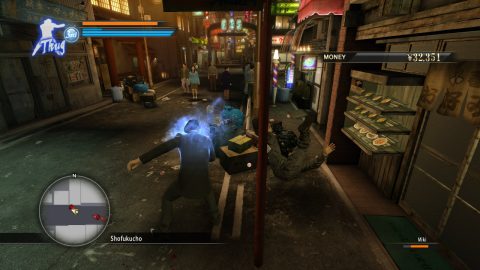
It’s even clever in the theme work. There’s the obvious surface level stuff relating to money and power, to the point this extends into gameplay by literally having to pay money to gain new skills. However, there’s more to dig into there, including a possible use of deceit as a motif with how every major player in the story is hiding their true intentions. There’s genuinely a lot to dig into, as each core theme weaves into each other and genuinely gives the story layers of complexity in both structure and meaning, especially with all the echos of future events.
There’s only three real stickler issues that throw a wrench in the main story. The first is one of the lieutenants, Awano, shooting a woman he brought with him during his confrontation scene and Kiryu’s lack of response to that. It does a disservice to Kiryu’s character to go along with an idea of him beating Awano at his own mind games, and also ruins Awano’s role in the story, as he’s later meant to be a sympathetic figure by the ending. The second is the odd treatment of a character revealed to have previously been a human trafficker, a can of worms the game opens and doesn’t know how to handle.
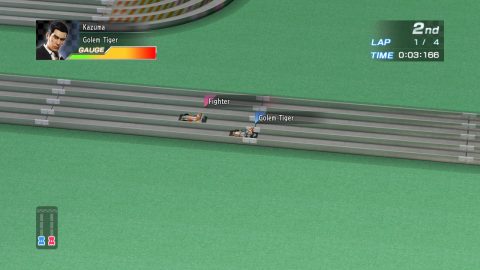
Lastly, the entire character of Lao Gui was badly conceptualized, turning what should have been a symbolic representation of Dojima’s cruel ambitions into a horrible monster man who happens to be Chinese and wearing traditional Chinese clothing, making the already “sus” White Flower Triad look like normal people in comparison. Unsurprisingly, he is modeled after a Chinese actor in the Chinese version instead of the ghoul he normally is. There is also some of the usual RGG um yikes in a few substories and the main side stuff, the worst offender being the transphobic stereotype of the Pleasure King in Kiryu’s real estate story. It wouldn’t be until the remasters that the studio would start becoming more aware of how bad a look stuff like this is and start reeling themselves in and try to better understand other audiences.
The side stuff is where Yakuza 0 really shines, as the team went bananas with the time period they were playing in. The head empty, high energy nature of the bubble period is perfectly captured with some of the most ridiculous scenarios in the franchise that did not involve an ABDL fetish. Help Steven Spielberg and Kevin Bacon direct Michael Jackson’s Thriller video as a zombie wrangler, beat up the founder of Aum Shinrikyo, convince a government employee to increase taxes and pop the bubble, or just go enjoy some pocket racing and have a completely sincere heart to heart with the circuit organizer about how it’s perfectly fine to still be a virgin in your adult years! No scenario is too goofy with this game, especially with the team having fine tuned their use of limited animation and textboxing to create some of the funniest visual bits of the series. Majima dancing to absolutely no attention or reaction from multiple flat camera angles WILL make you bust a gut.
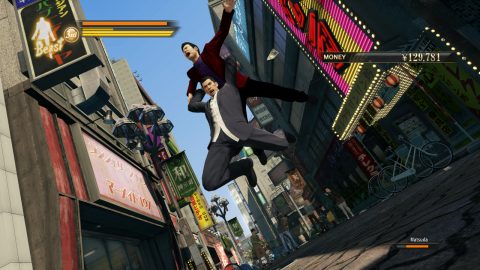
Kiryu and Majima also get some of the best major side stuff this entry, Kiryu running a real estate business to kick out five greedy billionaires from the area, and Majima helping a cabaret club survive against a united front of five corrupt rival clubs. The real estate business is mostly organizing employee positions and waiting on timers for payout, but that makes it an effective structure to allow you to break for other side stuff, which often rewards you with more employees. It also allows for more goofy substories where you get to watch rock faced manchild Kiryu try to Adult and Business.
Majima’s cabaret club management is much more involved, and the first time hostess management is actually fun. Elements from hostess maker remain in being able to dress up your platinum rank hostesses, important for manipulating their stats, though that aspect is about as random feeling as it was in hostess maker. Where we do better is actual cabaret club management, which is now a fast paced arcadey experience where you actively manage during business hours. You get to decide what hostess on shift gets what customer, respond to service calls that require you to read hand signs, and make strategic decisions when a customer’s time is up to either get good word of mouth via good service, or try for an extension, among other events. Heck, there’s even a “heat mode” that makes customers go on spending frenzies, with multiple bars of heat you can build before activating it for more of a payout. Instead of just going through menus and letting RNG decide the outcome, you have more active influence on things, with a lot of risk and reward to consider.
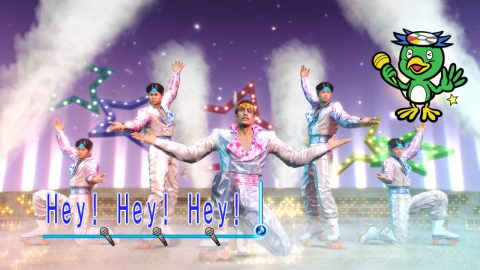
Minigames throughout the neighborhoods also have been given some variety with the time period. Some have some changed UIs and elements to match the lower tech period (this includes of the time arcade choices like Space Harrier and Fantasy Zone), while there’s several new games specifically made for this entry. Disco clubs are the big winner, with a surprisingly complicated rhythm game revolving around making steps on a mat while reaching the next button prompt to press on the beat. There’s also the telephone club, which is just hilarious from seeing within Kiryu’s horny brain while he wears dorky glasses and tries to think of the right pick-up responses. Pocket cars is also a ton of fun, a big money sink with its own substories attached that lead to an emotionally satisfying finale. The one bust is a cat fight minigame that’s just rock-paper-scissors but you’re gambling on women in fetish outfits having horny wrestling matches.
As far as the core combat goes, this might be the series high point, arguably in competition with Lost Judgment and the recent Like A Dragon Gaiden. Kiryu and Majima each get three styles, an all-rounder, a speed focused one, and a power style. Kiryu gets a good bread and butter load out, starting with the aggressive brawler and its comeback moves in place of usual parries. Rush is a lot of fun with its evasive options and fast but weak punches that can daze an enemy, while beast is almost comical in its raw power and complete lack of finesse. It even has an auto-grab mechanic for objects in the area when doing rush combos.
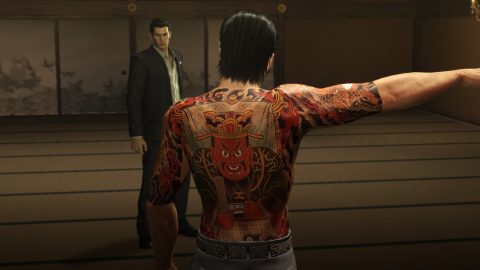
Majima gets a bit more inventive and gimmicky in his styles, outside his starting thug. It’s a very basic style with some mean looking moves, but is otherwise as standard as move sets get in these games. His power style, however, has him whip out a steel bat and go to town with all sorts of bizarre swings, and his speed style is just him break-dancing. It’s really unique, mind you, as you have to learn to get a feel for the various poses and rhythms the style uses to properly flow into each hit, creating a strong defense through a relentless offense.
Doing their real estate and cabaret shenanigans also gives each of them legend styles – which are kind of bad! Kiryu gets his usual move set, but without a lot of bell and whistles, including limp replacements for Komaki parries. The style has utility, but not a lot else. Majima’s one big benefit is he gets to go crazy with his signature dagger and has an easily abused heat action where he just stabs people and makes a funny haha about it (that’s our Majima!), but is otherwise pretty limited compared to his fleshed out new move sets. They’re mostly here for the novelty.
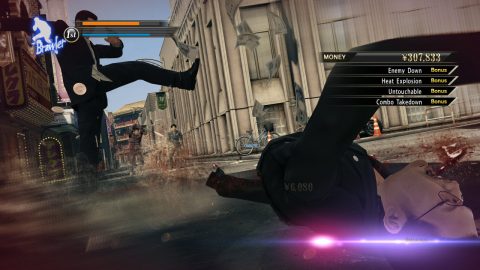
Also, as mentioned before, money is the core of basically all actions in this game, including gaining skills and bonuses in style grids. This makes the addition of a new ultra-powerful enemy in Mr. Shakedown absolutely brilliant. There are two different Mr. Shakedowns roaming each map, and they have a crap ton of health and absolutely terrifying damage output. If they win, they also take all your money, which means a lot of progress for leveling is lost and you might find yourself panicking. Their moves are also cleverly designed, easy to read and thus making you more confident in going for a longer combo before backing away – until they toss out an unexpected follow up and wack away most of your health. Don’t get greedy! Future games would try to have some variation of Shakedown in some form, though the original concept is what did it best.
Presentation wise, Yakuza 0 does look a bit ropey in points, even more so than usual. Art direction is great, but trying to co-develop for two consoles of two different generations results in a lot of sloppy looking textures that might distract you. The soundtrack is another story, filled with so many bangers that it’s hard to narrow it down. Interplanetary Spark, Tusk, Trouble Shooting Star, As You Like, Ignite Your Spirit, and the list goes on in variety and quality. That doesn’t even getting into the fantastic boss themes for the lieutenants, Kuze’s Pledge of Demon being an all-time great for the series, or karaoke additions like the much memed JUDGMENT (with Kashiwagi on keyboard!). Even Shonan no Kaze returns from the Kurohyou games with Bubble as a main theme, which is just absolutely stellar (though we got an RGG composed original theme in the west, be sure to mod the theme back in if on PC).
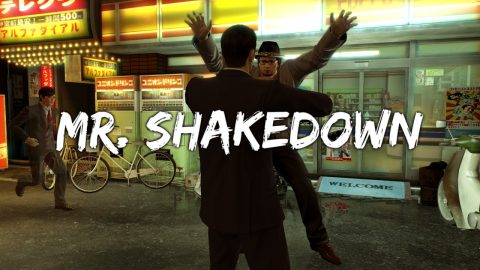
Yakuza 0 does have some unfortunate flaws in its writing and portrayal of certain characters, but it’s also hard to deny everything right the game does. It’s a genuinely exciting, addicting adventure with a unique energy and style no other entry has. It has some of the best combat, some of the freshest ideas, some of the best conceptualized side and minigames, a very strong progression loop, and adds quite a lot to some major franchise characters. This being the game that saved the series in the west makes more sense the more you play it and understand it.
Before Yakuza 5‘s cliffhanger could be resolved, however, RGG Studio wanted to take the opportunity to go back where things started and make a new take. Things were about to get “extreme,” you could say.
